 Minimum
...... The number of times the least drawn
(coldest) number has been drawn. It forms the lower
boundary of the above graph.
Minimum
...... The number of times the least drawn
(coldest) number has been drawn. It forms the lower
boundary of the above graph.
 Maximum
...... The number of times the most drawn number
has been drawn. It forms the upper boundary of the
above graph.
Maximum
...... The number of times the most drawn number
has been drawn. It forms the upper boundary of the
above graph.
 Standard
deviation...... a measure of the spread of the
number of times drawn. It is expressed as a number
which when added and subtracted from the average,
provides the range within which most of the results
fall. Graphically it is reflected in the fatness of
the normal distribution curve shown above.
Standard
deviation...... a measure of the spread of the
number of times drawn. It is expressed as a number
which when added and subtracted from the average,
provides the range within which most of the results
fall. Graphically it is reflected in the fatness of
the normal distribution curve shown above.
 Total
population...... The number of balls drawn since
the lottery began on Draw 1. If you multiply each bar
height (how many balls in chart f3) by its
number of times out , and add them all up - it equals
this figure.
Total
population...... The number of balls drawn since
the lottery began on Draw 1. If you multiply each bar
height (how many balls in chart f3) by its
number of times out , and add them all up - it equals
this figure.
 Average
or mean......The total number of balls drawn
(total population) divided by 49.
Average
or mean......The total number of balls drawn
(total population) divided by 49.
 Median......The
middle number taken from the range of number of times
drawn.
Median......The
middle number taken from the range of number of times
drawn.
 Mode......The
most popular number of times drawn (i.e by a
selection of balls). Where in chart f3 there
is no clear indication of the number of times out
corresponding to the highest single column - (this is
the Mode), this software will return the highest Mode
where it finds more than one.
Mode......The
most popular number of times drawn (i.e by a
selection of balls). Where in chart f3 there
is no clear indication of the number of times out
corresponding to the highest single column - (this is
the Mode), this software will return the highest Mode
where it finds more than one.
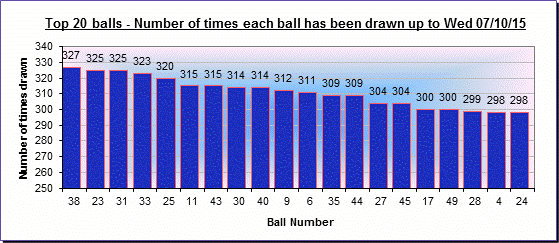

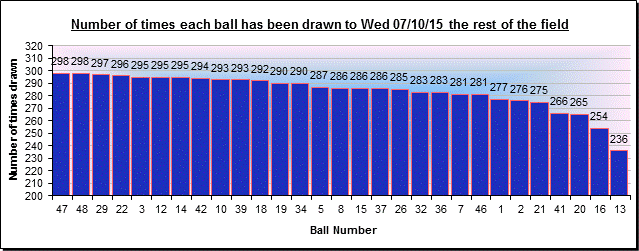
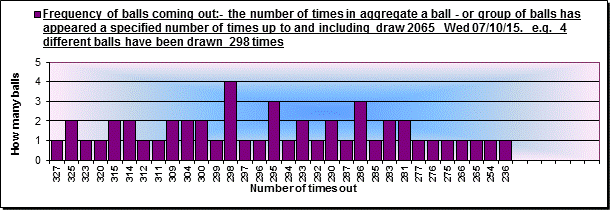
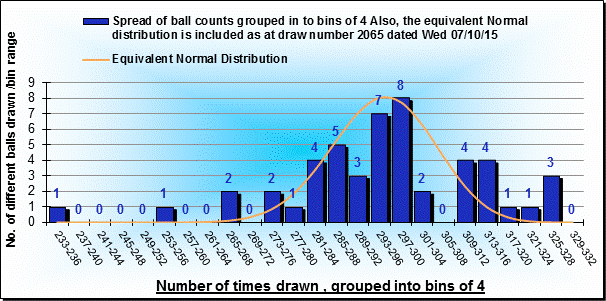
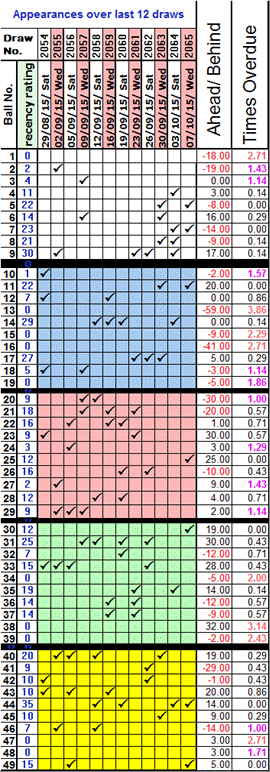
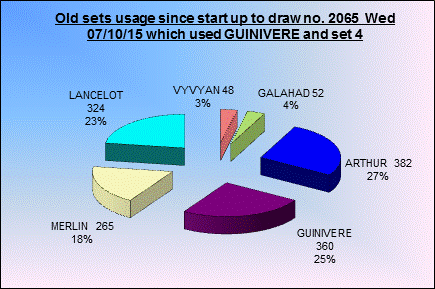
![]()
